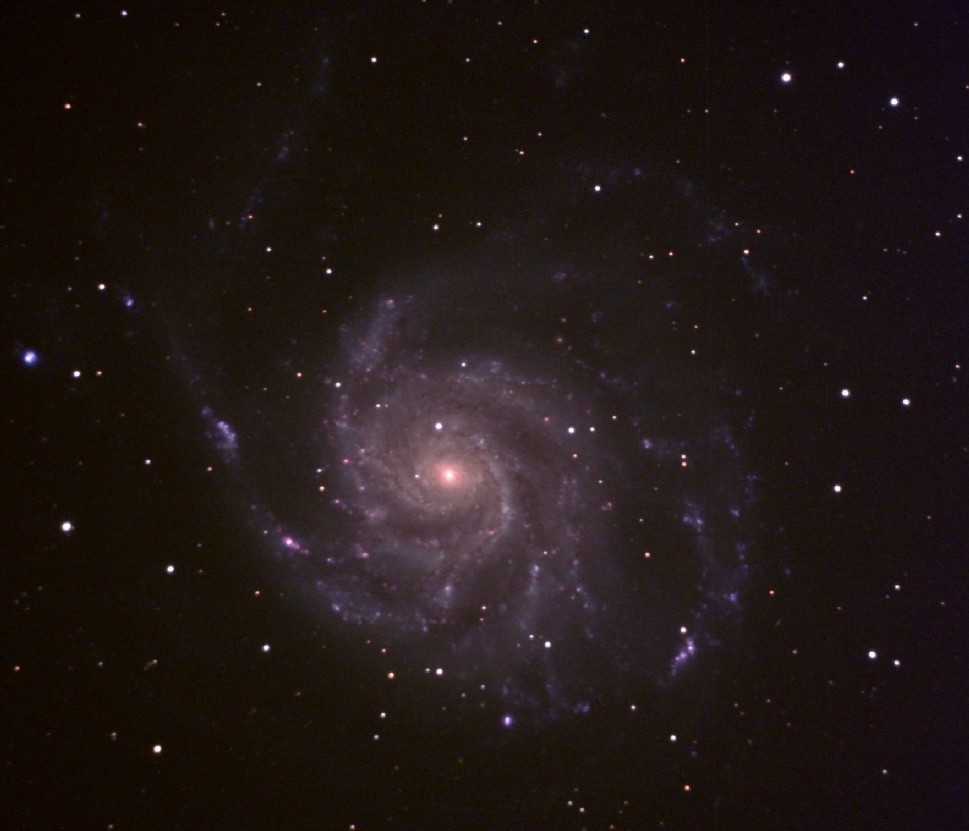
|
|
| M101 The Pinwheel Galaxy, Image above cropped and downsized for display. Click on image for full frame full resolution image. |
|
The spiral galaxy M101 can be found a little above the end of the big dipper's handle. This galaxy is best seen in larger amateur telescopes of 12" or more aperture. It is considered one of the finest examples of a classic face on spiral galaxy. It is huge as galaxies go, at more than 170,000 light years in diameter and at least 200 billion suns worth of material mass. By comparison, our Milky Way, considered a large galaxy in its own right, is 100,000 light years in diameter with over 100 billions suns worth of mass. M101 or the Pinwheel galaxy is the central queen bee of a group of almost two dozen satellite galaxies. Eventually the huge gravitational pull from M101 will draw in and incorporate most of those surrounding galaxies. Some of the bright nodules that you can see in the outer arms are likely the core remnants of galaxies that have already been captured into M101. M101 and it's satellites lie about 25 million light years away from us and our local group of galaxies (which includes Andromeda and about a dozen smaller galaxies). Perhaps because of it's huge size and mass, it has produced more supernovas in the last century than any other nearby galaxy. Recently Astronomers have discovered signs of possible intermediate black holes in the spiral arms. Such black holes have long been presumed to exist, but until recently we had no certain evidence for them. |
|
10"
F6.3 Schmidt Cassegrain Telescope, Canon
300D camera at prime focus |